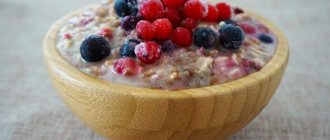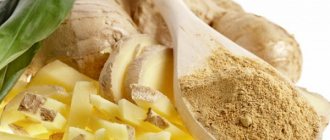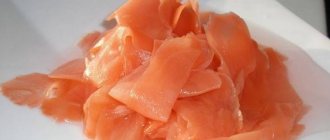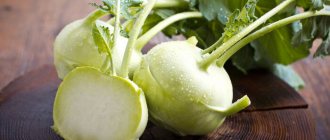Beneficial features
One of the main beneficial properties of wheat porridge is the normalization of fat metabolism. This effect is due to the composition of the product: sulfur, manganese, zinc, vitamins B, E, A, K, linoleic acid and proteins.
Wheat porridge contains a lot of peptins and fiber, which help cleanse the body of toxins and normalize intestinal function. For this reason, this product is indicated for people suffering from constipation and other disorders of the gastrointestinal tract.
Porridge is also worth eating because it contains folate, a water-soluble vitamin, the presence of which plays a significant role in the process of hematopoiesis. To get a daily dose of this element, it is enough to eat 150 g of cooked cereal.
In most cases, crushed grain raw materials are used for porridge. It is important to understand that the coarser the grind, the more nutrients, vitamins and fiber are retained in the product.
There are other beneficial properties of wheat porridge:
- Strengthening the immune system and blood vessels . This happens due to the high concentration of ascorbic acid.
- Energy replenishment . Wheat cereal helps to quickly recover for those who are faced with significant physical activity.
- Freeing the intestines from pathological microflora . The fiber contained in coarsely crushed wheat is responsible for this.
- Improving the condition of skin, nails and hair . Thanks to the presence of vitamins A and E in the porridge, hair acquires shine, the skin becomes elastic, and nails become stronger.
- Reducing bad cholesterol and eliminating saturated fats . This effect is possible due to the presence of fiber in wheat cereals, which acts as a scrub for the intestines. For the same reason, porridge will fit perfectly into the weight loss menu.
- Recovery after antibiotic use . Eating wheat porridge helps restore the body to its previous state after suffering a serious illness. Treatment with various chemicals and antibiotics significantly weakens the immune system; porridge is a product that can correct this.
- Calms the nervous system and improves memory . This effect is the result of the influence of vitamin B.
- Preserving the youthful state of internal organs . This is facilitated by a set of amino acids contained in wheat grains.
Since wheat porridge has a low glycemic index, it is suitable for people suffering from diabetes and colitis.
Cooked cereal helps improve the digestive process and satisfies hunger for a long time. This product also ensures proper functioning of the intestines, resulting in trouble-free bowel movements, release of waste and elimination of toxins. Due to its low calorie content, lack of fat and high protein content, the dish is suitable for baby food.
The benefits of wheat cereal
The general strengthening properties of wheat cereal are considered especially valuable, which manifest themselves in excellent stimulation of the human immune system, therefore this product is recommended to be included in the menu for people professionally involved in heavy physical labor. This cereal is recognized as a natural source of energy for the body, highly valued both in daily and dietary nutrition.
Dishes prepared from wheat cereals are good regulators of fat metabolism, further improving the functioning of the digestive tract and helping to lower cholesterol levels in the blood. The maximum benefit of wheat cereal is observed if you eat dishes based on it for breakfast - then you can not only get a boost of energy for the whole day, but also not feel hungry until lunch.
Regular consumption of dishes prepared from wheat cereals also helps to improve the functioning of the cardiovascular system and brain, slow down the aging process, and normalize the condition of the skin, nails and hair. In addition, this product helps remove harmful substances from the body - waste, excess fat, toxic compounds, precipitated salts of heavy metals, as well as taken antibiotics.
Calorie content
The calorie content of porridge is 314 Kcal. 100 grams of product contains 6 g of carbohydrates, 1.5 g of fat and 12 g of protein.
If you cook porridge with water, then 100 g of the dish will contain 90 calories.
If you cook cereal in milk, then 100 g of the product will contain 128.2 Kcal. When adding a small amount of butter - 136.9 Kcal. 100 g of this dish contains 4.22 proteins, 3.82 g of fat and 19.09 g of carbohydrates.
When porridge is cooked in water with butter, there are 108.3 kcal per 100 g of product. The calculation of BJU in this case will be as follows: 3.2 g of protein, 2.6 g of fat and 17.2 g of carbohydrates.
The calorie content of wheat porridge can be adjusted taking into account a specific goal (lose weight, strengthen the immune system, etc.).
Energy value and composition of wheat porridge
The content of proteins, fats and carbohydrates varies slightly depending on the type of wheat and the method of its processing. The coarser the grind, the more useful substances (vitamins and microelements) remain in the cereal. In order to assess the nutritional value of the finished product, you need to pay attention to the available information, how many kcal are in wheat porridge, prepared from one or another type of cereal.
Our most common “Poltava” cereal has 340 kilocalories per 100 grams. But wheat porridge cooked from it has only 71-78 calorie units per 100 g - due to a fourfold increase in mass . Accordingly, the amount of BZHU in 100 g of ready-to-eat porridge is also reduced by 4-5 times compared to cereal.
The method of preparing the porridge also matters.
- The calorie content of wheat porridge with water per 100 g will be the lowest (slightly below 100 kcal), which allows it to be considered a dietary product.
- The calorie content of wheat porridge with water and butter increases by 25-30 kcal.
- If wheat porridge is cooked in milk, the calorie content of the dish increases by about the same amount. A large amount of milk leads to an increase in calorie content to 200 or more.
- By adding butter of your choice to milk porridge, we “reward” ourselves with additional calories, bringing them to 170-190 kcal per 100 g.
- Wheat porridge cooked with sugar in water has relatively few calories - 100-110, the main thing is to know the right amount of sweetening.
Each person should consciously approach their diet based on their lifestyle, type of activity and goals. Then there will be no problems with excess weight, which are so familiar to the population of countries with a high level of civilization.
The glycemic index of cereals made from various varieties of wheat ranges from 40 to 71 units; Moreover, the thicker the porridge turns out, the higher the index will be.
Wheat porridge for weight loss
When the goal is to lose weight, then you need to create a menu from foods with low calorie content and a low glycemic index. Wheat cereal meets these requirements.
Those who intend to lose weight or normalize bowel function should start with porridge with water. Adding butter, milk and full-fat sour cream will significantly slow down the process of getting rid of extra pounds.
In order for cereals cooked in water to give the maximum effect, you need to take into account some features of its use:
- It is better to eat porridge in the morning;
- the dish can be combined with low-fat cottage cheese, vegetables and vegetable oils;
- It is allowed to do fasting days on one porridge, but no more than once a week;
- The finished product should only be consumed hot, without leaving it in the refrigerator for later use;
- you need to eat often and in small portions;
- you should drink a glass of water half an hour before meals;
- you need to give up any foods, including porridge, after 6 pm;
- If you feel a noticeable feeling of hunger between meals, you can eat 2-3 tablespoons of boiled wheat porridge.
In order for the dish to have a rich taste without harm to the body, you need to cook it with the addition of honey, dried fruits, nuts, a small amount of olive oil or soy sauce.
For lunch, it is better to eat greens, fruits, lettuce or fresh vegetables, leaving the porridge aside.
It is also necessary to pay attention to the fact that the dietary benefits of boiled cereals are less than those of steamed or sprouted wheat. Therefore, for those who want to get results extremely quickly, it makes sense to try all the options.
To obtain sprouted wheat, you need to do the following: take the seeds, rinse them in a colander and fill them with water in a 1 liter jar. Remove any floating grain particles, then add a drop of potassium permanganate. After this, you need to change the water 2 times. You need sprouts up to 2 mm.
How to cook porridge with milk?
When cooking wheat porridge with milk, you need to make sure that the milk does not escape and stir the porridge regularly. Traditionally, this version of porridge is prepared with a liquid consistency. Therefore, for 1 part of cereal you need to take 4 parts of milk. The thickness can be adjusted during the cooking process by adding milk to the desired consistency.
Cooking sequence:
- prepare and wash the cereal;
- boil milk in a saucepan;
- put the cereal into boiling milk and stir constantly;
- when the porridge boils, add salt and sugar;
- stirring, cook for 20 minutes. over low heat;
- turn off the stove, cover the pan with a lid and leave for 20 minutes;
- When serving, you can add honey, nuts, raisins, and seeds.
Required Products:
- wheat cereal – 1 cup;
- milk - 4 cups;
- salt, sugar, butter - to taste.
Dish for children
Initially, you need to take into account that children at an early age often have gluten intolerance, and wheat porridge contains this element in excess. Therefore, it is important to make sure that this product will not be harmful to the child.
When rice and buckwheat porridge are included in the children's menu, you can also prepare wheat porridge.
If allergic reactions have been noticed in a child, a dish made from wheat cereal should be used for feeding only after the baby turns one year old. If there is no such problem, you can start at 8-9 months.
For better absorption of the product by the child’s body, you must adhere to the following rules:
- when finished, the porridge should have a runny consistency;
- The dish is best served in the first half of the day;
- For the first portion, 1 tsp will be enough. finished product;
- porridge should be on the menu 1-2 times a week;
- No spices should be added to the cereal during cooking.
If you feed your baby millet porridge in the morning, the manifestation of allergies will be noticeable throughout the day. If such symptoms occur, you should stop using wheat cereal. If there are no signs of irritation, the portion can be doubled.
At what age can you give porridge to children?
Wheat porridge, the benefits of which are obvious for an adult, should be introduced into a child’s diet carefully and gradually. Pediatricians recommend introducing children to this porridge after 12 months.
Wheat cereal contains gluten, which requires special enzymes in the stomach and intestines to break it down. They begin to be produced in the child’s body only from a certain age. Therefore, early consumption of wheat porridge can cause allergies.
For a child, porridge can be prepared from natural wheat cereals, following some rules of child feeding:
- porridge should be cooked in water without salt and sugar;
- the consistency of the finished porridge should be liquid;
- the first portion should be no more than a teaspoon;
- It is enough to give wheat porridge to a child once a week;
- If an allergic reaction occurs, exclude wheat porridge from the child’s diet.











